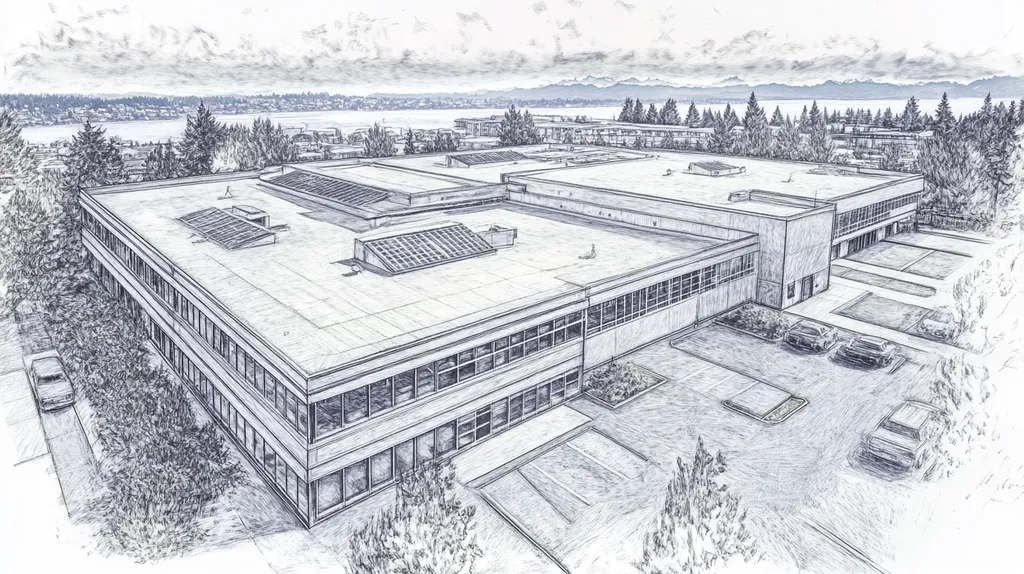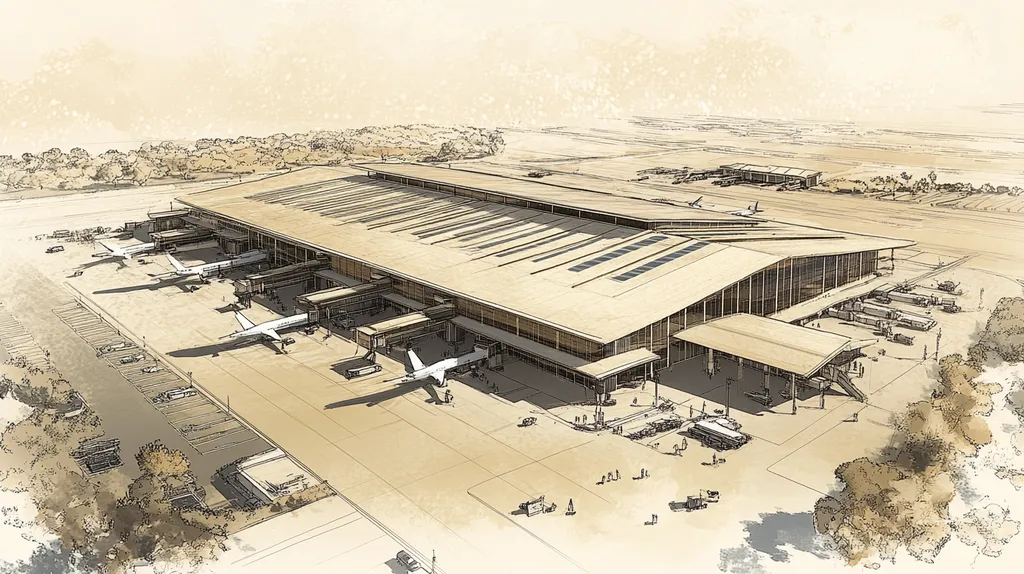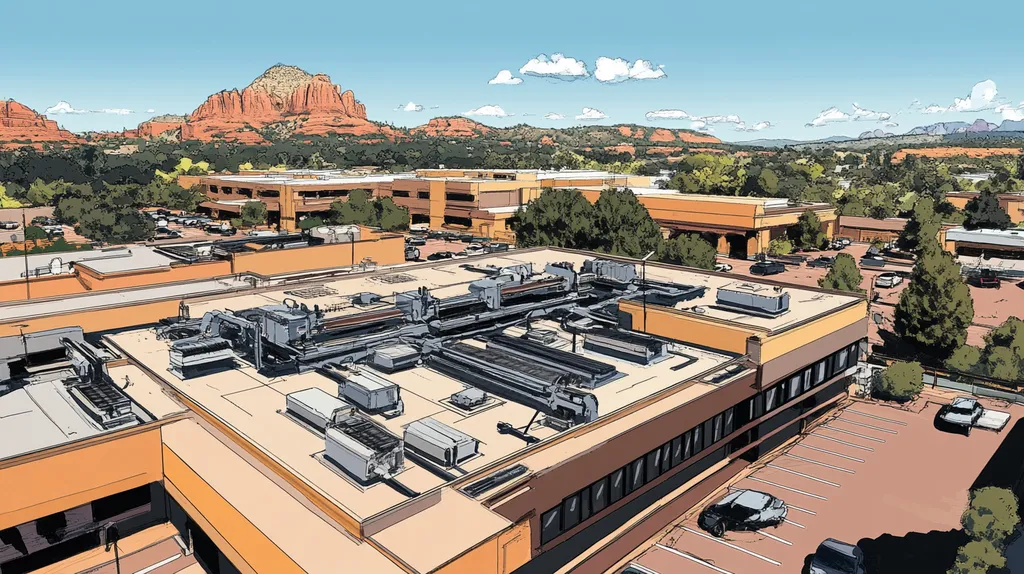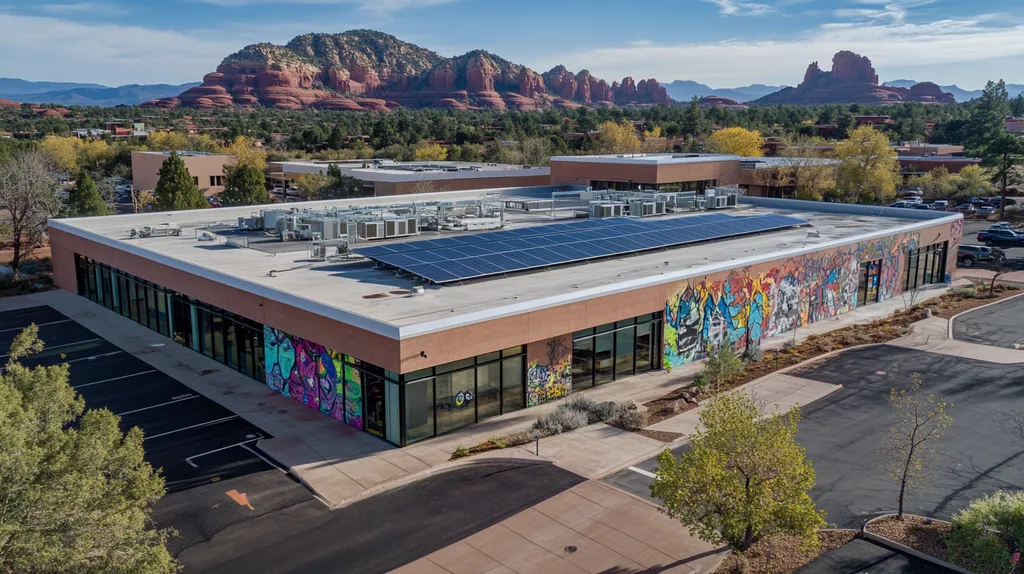In today’s fast-paced industrial environment, roofing work disruptions can cost facilities up to $50,000 per day in lost productivity. These significant financial implications make minimizing interruptions during roof maintenance and repairs a critical priority for property owners and facility managers.
From coordinating complex schedules to managing noise levels and ensuring workplace safety, successful industrial roof work requires a systematic approach focused on operational continuity.
This comprehensive guide examines proven strategies for reducing disruptions across six key areas: fundamental concepts, system components, implementation methods, maintenance requirements, performance metrics, and optimization strategies.
SECTION 1: FUNDAMENTAL CONCEPTS
Understanding the fundamental concepts of industrial roofing is vital for keeping operations running smoothly during roof work. Research indicates that when roofing projects are not managed effectively, significant productivity losses can occur, sometimes reaching as high as $50,000 per day for large facilities. Property owners and facility managers need to focus on essential elements, including different roofing system types, the importance of routine inspections, and identifying areas that may experience disruptions.
Understanding Roofing System Types
Industrial roofing systems are designed for specific applications, each bringing its own set of advantages and challenges. For instance, built-up roofs offer durability, while single-ply membranes are appreciated for their flexibility. Take the rubber EPDM roof; it’s excellent for adaptability but needs careful installation to prevent leaks. Choosing the right roofing system is essential; picking the wrong type can lead to increased disruptions during maintenance or replacement tasks.
Moreover, various roofing systems respond differently to climate and operational stresses. By understanding these differences, property owners can better predict potential interruptions. It’s crucial to consult with roofing professionals to ensure compatibility with existing structures and specific operational needs.
Additionally, knowing the specifications of current roofing systems helps organizations plan effective maintenance schedules. Regular maintenance extends the lifespan of roofs and avoids unexpected failures. Familiarizing themselves with roofing types allows property owners to minimize risks associated with necessary roof work.
Importance of Regular Inspections
Regular roof inspections are critical in spotting and resolving issues before they escalate into major disruptions. Studies show that scheduled inspections can slash emergency repair needs by up to 40%. By keeping a close eye on roof conditions, property owners can maintain stable operations.
Inspections should involve a comprehensive evaluation of materials and structural integrity. Identifying minor issues like cracks or water pooling can prevent these small problems from becoming large-scale repairs that could lead to extensive downtime. Establishing a routine inspection schedule is a smart practice that helps ensure smooth facility operations.
Routine inspections also help in recognizing compliance issues with local building codes. Any non-compliance can result in legal challenges and added costs, compounding downtime risks. By addressing these issues early on, organizations can reduce disruptions and maintain a focus on safety and operational efficiency.
Identifying Potential Disruption Areas
Pinpointing areas that might face disruption during roof work is essential for effective planning. High-traffic zones and mission-critical operational areas should be flagged as potential disruption hotspots. For example, if roof work occurs over a production line, it can hinder manufacturing processes and jeopardize delivery timelines.
Additionally, a solid understanding of the facility layout aids in crafting schedules that minimize interference. By engaging with frontline teams, facility managers can better prepare for how roofing projects may impact daily activities. Early collaboration fosters a cooperative atmosphere that can significantly reduce disruptions.
The timing of roof work is also a key consideration. Scheduling projects during off-peak hours or utilizing noise-reducing technologies can substantially lower the impact on operations. A well-thought-out disruption mitigation strategy can facilitate smoother project execution while maintaining operational continuity.
SECTION 2: SYSTEM COMPONENTS
Understanding the key components of an industrial roofing system is essential for reducing disruptions during repair or replacement. Every choice related to roofing materials, structural integrity, and water management plays a crucial role in how smoothly a project unfolds. For example, selecting inappropriate materials can lead to delays and soaring costs, while neglecting drainage systems may result in severe water damage. This section dives into these critical components, highlighting their significance and the potential consequences of overlooking them.
Roofing Materials and Their Impacts
The selection of roofing materials goes beyond aesthetics; it influences project timelines and the overall efficiency of operations. Lightweight materials can significantly reduce the need for extensive structural support, enabling quicker installation.
In contrast, heavier materials often demand additional reinforcements, which can prolong the construction process. This added complexity may require more intricate engineering solutions, driving up costs and delaying completion.
Moreover, opting for durable materials can lead to fewer maintenance disruptions in the future. Energy-efficient choices can also yield lower operational costs, enhancing the attractiveness of the investment.
Being aware of these implications empowers property owners and facility managers to make savvy decisions, minimizing the risk of costly interruptions.
Structural Integrity and Load Bearing
The structural integrity of a roofing system is crucial. A roof must be designed to support not only its own weight but also additional loads, such as snow, water, and even equipment.
If the load-bearing capacity is improperly assessed, it can lead to dangerous structural failures. Projects may face unforeseen delays due to the need for redesigns that enhance support.
A long-term perspective is essential when considering the facility’s use. Roof systems intended to accommodate heavy HVAC units or solar panels demand meticulous planning right from the start.
Involving qualified engineers early in the planning process helps ensure that structural integrity is prioritized, thereby reducing potential disruptions during installation.
Drainage and Water Management Systems
A well-designed drainage and water management system is vital for preventing water-related issues that can disrupt operations. Insufficient drainage can lead to water pooling, which jeopardizes not only the roof but the entire building’s integrity.
Effective water management can significantly lower the risk of leaks and mold growth, both of which can be major sources of disruption if they emerge after installation.
Incorporating features like scuppers or internal drains can optimize water flow, reducing the frequency of maintenance issues. This proactive approach is crucial for extending the roof’s lifespan.
By emphasizing proper drainage and management systems during the planning phase, facilities can protect themselves from expensive repairs and prolonged service interruptions.
SECTION 3: IMPLEMENTATION METHODS
Industrial roofing projects pose a significant risk to the smooth operation of daily activities. In fact, nearly 60% of facility managers report noticeable productivity losses during roof maintenance. To safeguard operations and enhance efficiency, it is crucial to implement strategic methods. This section will delve into effective scheduling strategies, noise and dust mitigation techniques, and safe access protocols to help property owners tackle these challenges effectively.
Scheduling Strategies for Minimal Disruption
Effective scheduling is essential for minimizing disruptions during roof work. It is crucial to plan around peak operational times to avoid conflicts with critical business activities. For example, scheduling major work during off-peak hours or over weekends can help maintain a steady workflow.
A robust communication plan complements this strategy. By keeping employees informed about project timelines, expectations can be managed, which reduces anxiety around disruptions. Regular updates ensure that all stakeholders are aligned, which fosters a smoother experience throughout the process.
Flexibility in work schedules can also be advantageous. Contractors who can adjust their hours based on real-time facility needs respond better to unforeseen challenges, alleviating stress on staff and operations. Such adaptability often leads to a less stressful environment for everyone involved.
Employing a project management tool to track progress and address delays quickly can further enhance efficiency. Transparency ensures that any issues are resolved promptly, minimizing potential setbacks and preserving productivity.
Noise and Dust Mitigation Techniques
Noisy operations and dust generation can create a challenging work environment during roofing projects. Choosing low-noise tools and technologies can substantially lessen the impact. Many modern machines produce much lower noise levels compared to traditional equipment, making a noticeable difference.
To tackle dust, methods such as water sprays can effectively trap airborne particles. This not only protects employee health but also helps keep surrounding areas clean. Implementing immediate cleanup procedures will further minimize dust accumulation.
Sound barriers or enclosures around work areas can dramatically reduce noise levels within the facility. Temporary walls or screens serve as effective physical barriers, containing noise and dust, thus creating a more comfortable workspace for employees.
Training workers on dust and noise management practices is equally important. Educating teams fosters a culture of awareness and responsibility, contributing to safer and quieter work conditions throughout the roofing process. Excessive noise can lead to distractions and stress among workers (source: OSHA).
Safe Access and Egress Protocols
Establishing safe access and egress is crucial for maintaining a secure environment during roofing tasks. Clearly marked pathways and entry points help reduce hazards and guide workers effectively throughout the facility, preventing confusion and accidents.
Training personnel in the proper use of ladders, scaffolding, and other access equipment is vital. Compliance with safety standards must be prioritized, and implementing checklists ensures every detail is accounted for. Regularly scheduled safety drills reinforce protocols and prepare staff for potential emergencies.
Creating designated walkways for contractors minimizes risks of collisions between construction workers and operational staff. By establishing clear routes, all parties can navigate the premises safely and efficiently, helping to maintain workflow during the project.
Conducting frequent safety audits throughout the roofing process enables early identification of potential concerns. Proactively tackling these issues helps ensure safety for both staff and contractors while enhancing overall operational continuity.
SECTION 4: MAINTENANCE REQUIREMENTS
Industrial roofing systems demand consistent maintenance to prevent costly disruptions that can halt operations unexpectedly. Studies show that neglected roofs often develop leaks and structural damage, leading to downtime that can significantly affect productivity. It is vital to establish a comprehensive maintenance protocol focused on preventive maintenance, emergency repairs, and temporary protection measures. This section outlines these key elements to help ensure minimal disruption and extend the life of the roof.
Preventive Maintenance Schedules
Creating a preventive maintenance schedule is essential for safeguarding industrial roofs. Regular inspections can pinpoint emerging issues before they escalate into costly repairs. For instance, a simple monthly visual inspection can detect small leaks early, potentially saving thousands on emergency interventions.
A well-developed maintenance plan encompasses cleaning debris, assessing seams, and checking for blisters or cracks. Documenting these inspections is crucial, as it allows facility managers to monitor the roof’s condition over time. This proactive method significantly reduces the likelihood of unexpected shutdowns caused by roofing concerns.
Furthermore, roof warranties frequently stipulate the need for regular maintenance to remain valid. By adhering to these schedules, property owners not only extend the roof’s life but also safeguard their financial investment, enhancing the stability of ongoing operations.
Leveraging digital tools can improve the efficiency of maintenance schedules. Mobile applications can facilitate scheduling inspections, assigning tasks, and tracking completed work, ensuring no aspect of the maintenance plan is overlooked.
Emergency Repair Procedures
Even with diligent maintenance, emergencies can occur, making it imperative to respond quickly to roofing issues. A sudden leak during heavy rainfall, for example, can lead to significant water damage if not addressed swiftly.
Establishing well-defined emergency repair procedures is crucial. Facility managers should maintain a list of trusted contractors who can mobilize quickly in response to roofing emergencies. This preparedness minimizes downtime and helps safeguard operations as repairs are initiated.
Additionally, training staff on basic emergency response actions is essential. Even minor leaks can escalate rapidly, so having a plan in place allows for immediate containment measures, such as deploying tarps or buckets to manage water influx temporarily. These initial actions can buy valuable time until professional assistance arrives.
Frequent drills simulating emergency scenarios can instill preparedness in teams, enhancing their ability to act swiftly in real-life situations. Proactive emergency planning can save businesses substantial amounts in repair costs and maintain operational continuity.
Temporary Protection Measures
Implementing temporary protection measures during maintenance or emergency repairs is vital to reducing disruption. For example, positioning tarps can effectively shield sensitive equipment from debris that may fall during roof work. This preparation minimizes risk and safeguards valuable assets.
Another useful approach is establishing containment barriers around work zones. These barriers help separate noisy activities from critical operations, allowing essential tasks to continue without interruption. This not only promotes safety but also ensures a smoother workflow.
Utilizing lightweight structures, such as canopies or tent-like shelters, can further enhance protection for outdoor operations. These temporary solutions shield equipment and personnel from adverse weather conditions, enabling work to persist even during inclement weather.
Finally, communicating these protective measures to all staff members is essential for maximizing their effectiveness. When everyone is informed about the temporary protocols, confusion is minimized, creating an environment conducive to productivity and safety.
SECTION 5: PERFORMANCE METRICS
In the high-stakes arena of industrial roofing, keeping a finger on the pulse of project performance is critical. Even minor disruptions can lead to significant financial losses and operational hiccups. By monitoring essential metrics like noise, dust, and safety compliance, property owners and facility managers can ensure that roofing projects are executed smoothly, ultimately enhancing client satisfaction and preserving productivity. This section outlines key performance indicators that help gauge the efficiency of roofing work.
Monitoring Noise and Dust Levels
Excessive noise and dust generated during roofing projects can create an uncomfortable environment for employees and disrupt overall operations. Monitoring these factors is vital to minimizing disturbances. Utilizing noise meters offers real-time insight into sound levels, helping to ensure they stay within acceptable thresholds.
Implementing dust monitoring tools such as suppression systems can significantly reduce the amount of airborne particulates. Frequent assessments enable facility managers to respond immediately when dust levels exceed safe limits, maintaining a healthier workspace.
By establishing clear guidelines on acceptable noise and dust levels, companies can keep production flow uninterrupted. Providing this information upfront can also foster cooperation and understanding between employees and contractors, leading to a cohesive working environment.
Strong monitoring practices not only mitigate disruptions but elevate the quality of the workplace, ensuring that both performance and employee well-being are prioritized.
Tracking Project Timelines and Milestones
Timely completion is essential in industrial roofing work, as delays can lead to prolonged disruptions and increased costs. Establishing clear project timelines with defined milestones is crucial for keeping roofing activities on track.
Utilizing project management software can facilitate real-time tracking of progress, uncovering potential delays early and allowing for proactive communication between contractors and facility managers.
Regular status meetings are instrumental in reinforcing accountability among team members and stakeholders. When everyone is on the same page regarding expectations, the risk of disruptions significantly diminishes.
Additionally, providing a realistic timeline helps manage client expectations, fostering trust and ensuring smoother operational continuity throughout the duration of the roofing project.
Assessing Safety Compliance
Safety compliance is a non-negotiable aspect of roofing projects, as neglecting safety protocols can lead to accidents and significant project delays. Regular safety assessments should be integrated into the performance metrics framework.
Implementing a comprehensive safety compliance checklist ensures that regulations are consistently followed. Important factors include equipment safety, worker training, and proper material handling practices.
Investing in safety training programs not only safeguards personnel but also cultivates a culture of safety within the organization. This proactive approach significantly reduces risks and boosts the confidence of the workforce.
Ultimately, maintaining strong safety compliance translates into fewer accidents, reduced operational disruptions, and enhanced productivity during roofing projects.
SECTION 5: PERFORMANCE METRICS
In the high-pressure environment of industrial roofing, closely monitoring performance metrics is essential to prevent costly disruptions. Even minor setbacks can lead to significant financial losses and operational challenges. By focusing on key indicators such as noise, dust, and safety compliance, property owners and facility managers can ensure roofing projects run seamlessly, ultimately boosting client satisfaction and preserving productivity. This section explores the vital metrics that provide insight into the effectiveness of roofing endeavors.
Monitoring Noise and Dust Levels
High levels of noise and dust are common byproducts of roofing projects that can create an uncomfortable atmosphere for employees and disrupt normal operations. Monitoring these factors is crucial to maintain a productive environment. Utilizing noise meters delivers real-time data on sound levels, allowing facility managers to ensure they stay within permissible limits.
Dust management is equally important. Implementing effective dust suppression systems significantly reduces airborne particles. Regular evaluations enable facility managers to swiftly address any spikes in dust levels, safeguarding employee health and ensuring compliance with safety standards.
By laying out clear guidelines for acceptable noise and dust levels, businesses can keep production workflows steady. This proactive approach fosters better communication and collaboration between workers and contractors.
Overall, effective monitoring not only minimizes disruptions but also enhances the workplace atmosphere, promoting well-being and productivity.
Tracking Project Timelines and Milestones
Adherence to timelines is critical in industrial roofing projects. Delays can stretch out disruptions and lead to increased costs. Establishing clear project timelines with specific milestones is essential to ensure roofing tasks stay on track.
Employing project management software facilitates real-time monitoring of progress. This allows for the early identification of delays and ensures that timely communication occurs between contractors and facility managers.
Regular status meetings reinforce accountability among team members and stakeholders alike. When everyone shares a common understanding of expectations, the risk of interruptions diminishes significantly.
Furthermore, providing a realistic timeline helps in managing client expectations effectively. Transparency in scheduling builds trust and ensures operational continuity throughout the roofing phase.
Assessing Safety Compliance
Safety compliance cannot be overlooked during roofing projects. Ignoring safety protocols can lead to accidents and will likely result in project delays. Regular safety evaluations should be integral to any performance metrics framework.
Implementing a comprehensive safety compliance checklist aids managers in consistently monitoring adherence to regulations. This checklist should encompass equipment safety, worker training, and proper handling of materials.
Investing in safety training programs not only protects personnel but fosters a culture of safety throughout the organization. This proactive approach minimizes risks and boosts worker confidence.
Ultimately, maintaining strong safety compliance translates into fewer accidents, reduced operational disruptions, and enhanced productivity during roofing projects.
The Bottom Line
With industrial roofing disruptions costing facilities up to $50,000 per day in lost productivity, implementing proper planning and management strategies is no longer optional—it’s essential for business survival.
The key to successful industrial roof work lies in systematic preparation across all critical areas: from material selection and structural considerations to precise scheduling and safety protocols.
By focusing on preventive maintenance, establishing clear performance metrics, and maintaining effective communication channels, facilities can reduce disruption periods by up to 40%.
Moving forward, organizations must prioritize comprehensive roofing strategies that balance operational continuity with necessary maintenance and repairs, ensuring both short-term productivity and long-term structural integrity.
FREQUENTLY ASKED QUESTIONS
Q. What are the different types of commercial roof systems?
A. There are several types of commercial roof systems, including built-up roofs, single-ply membranes, and EPDM roofs. Each type has its pros and cons, which can greatly impact installation and maintenance. Understanding these options helps in selecting a system that matches your facility’s unique needs and reduces potential disruptions during work.
Q. How does regular maintenance affect my industrial roof?
A. Regular maintenance is crucial for the longevity of your industrial roof. It helps identify and address small issues before they evolve into larger, costlier problems. A consistent maintenance schedule not only extends the lifespan of the roof but ensures that operations can continue smoothly without unexpected disruptions.
Q. What scheduling strategies minimize disruption during industrial roof work?
A. Effective scheduling is key to minimizing disruption. Conducting major work during off-peak hours or weekends can help maintain operational flow. Additionally, informing employees about project timelines fosters understanding and reduces anxiety, ensuring a smoother process and less impact on productivity.
Q. How can I prepare my building for roof maintenance or repair?
A. Preparing your building involves several steps. Start by securing sensitive equipment or documents and communicating project timelines to staff. You should also establish clear walkways for contractors and implement temporary protections to minimize disruption. This proactive approach helps ensure safety and continuity during roofing work.
Q. What are the benefits of monitoring performance metrics during roofing projects?
A. Monitoring performance metrics ensures that projects proceed efficiently and safely. It allows facility managers to track noise, dust levels, and safety compliance, helping mitigate disruptions. By keeping a close eye on these factors, potential issues can be identified and addressed early, improving overall project outcomes and employee satisfaction.
Q. How can I assess the safety compliance of my roofing contractor?
A. Assessing safety compliance involves reviewing the contractor’s safety protocols, certifications, and training programs. Ensure they have a safety compliance checklist in place and that they conduct regular safety assessments. This diligence helps prevent accidents and maintains smooth operational continuity during roofing projects.
Q. What temporary protection measures should I implement during roof work?
A. Temporary protection measures include using tarps to shield sensitive equipment and establishing barriers to separate noisy work from critical operations. Additionally, consider using canopies or tents for outdoor areas to protect staff from adverse weather. These steps help minimize disruption and ensure a safe and productive environment.










